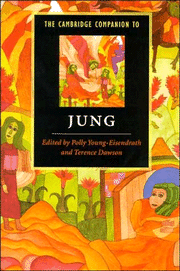Book contents
- Frontmatter
- Introduction
- Part 1 Jung's ideas and their context
- Part 2 Analytical psychology in practice
- 5 The classical Jungian school
- 6 The archetypal school
- 7 The developmental school
- 8 Transference and countertransference
- 9 Me and my anima
- 10 The case of Joan
- Part 3 Analytical psychology in society
- Glossary
- Index
- References
10 - The case of Joan
classical, archetypal, and developmental approaches
from Part 2 - Analytical psychology in practice
Published online by Cambridge University Press: 28 May 2006
- Frontmatter
- Introduction
- Part 1 Jung's ideas and their context
- Part 2 Analytical psychology in practice
- 5 The classical Jungian school
- 6 The archetypal school
- 7 The developmental school
- 8 Transference and countertransference
- 9 Me and my anima
- 10 The case of Joan
- Part 3 Analytical psychology in society
- Glossary
- Index
- References
Summary
In the following pages, three experienced and accomplished Jungian analysts comment on where they would focus, what they would do, and what they imagine to be the course of treatment for “Joan.” Joan is a pseudonym for a patient whose printed case material each analyst received and read closely before writing a response. Each received the same case report, summarized from the actual records of a forty-four-year-old female patient at the Renfrew Center for Eating Disorders, a private hospital in the Philadelphia area. Renfrew generously made available this material, which had previously been used in the public domain at a national conference on eating disorders.
Each analyst was asked to see things primarily from the perspective of her or his “school,” each one being a prominent representative of that approach. Dr. Beebe writes from the classical approach, Dr. McNeely from the archetypal, and Dr. Gordon from the developmental. The analysts did not consult with each other on the case. As you read their responses, you may note how they highlight the model sketched out by Andrew Samuels in the Introduction in which he weighs the importance of the archetype, Self, and the development of personality as well as the clinical issues of the transferential field, symbolic experience of Self, and the phenomenology of imagery for each of the Jungian schools. What he has sketched as an interpretive model for the three schools of analytical psychology (see Introduction, pp. 8-11) works very well in understanding the interpretations of these authors. It must be remembered that none of the three analysts ever met the patient and, consequently, their essays should not be seen as comparing therapeutic practice. Rather, they are designed to illustrate different approaches to a real case. Apart from a few necessary instructions for thinking about the case, the following is all the information the authors received.
- Type
- Chapter
- Information
- The Cambridge Companion to Jung , pp. 185 - 220Publisher: Cambridge University PressPrint publication year: 1997
References
- 1
- Cited by



